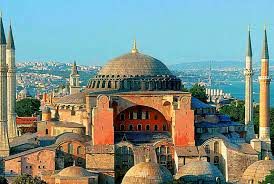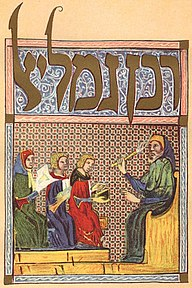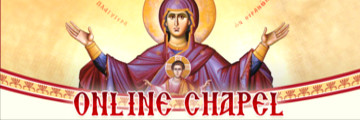 It has been some five months since we have willingly removed ourselves from worshipping in the temple of Holy Transfiguration Church at the request of our Bishops as part of the precautions taken in response to the COVID pandemic to limit the spread of the virus. I miss the worship life and fellowship we had before all this began.
It has been some five months since we have willingly removed ourselves from worshipping in the temple of Holy Transfiguration Church at the request of our Bishops as part of the precautions taken in response to the COVID pandemic to limit the spread of the virus. I miss the worship life and fellowship we had before all this began.
In addition, in recent weeks, we have the added sadness of the reconversion of the great Hagia Sophia Church into a functioning mosque, bringing to remembrance the fall of the thousand-year Byzantine Christian empire to the Ottoman Invaders on May 29, 1453 after a month and a half siege. The Kingdoms of this world continue to evidence falling prey to the lust for power hidden behind the justification of culture and religious faith. It is the same thing the devil offered Jesus on the Mount of Transfiguration, which he refused.
Building, converting and destroying temples of worship has been going on since the creation of humanity. In the case of Israel, in the beginning, God’s chosen people had no temple. When they asked for a place to worship God told them He was not confined to houses like the idols of pagan cultures. But as soon as the people were settled in the promised land, they wanted to worship God in a particular place, so God consented to dwell there.
Then as the people grew into a great Kingdom, they wanted to build a greater Temple in honor of God to worship Him there. So God condescended once more and gave instructions on how to build the Ark of the Covenant and place it in the Temple in the Holy of Holies. The Great Temple of Solomon was eventually destroyed and the people were exiled into the Babylonian Empire. Centuries later the Temple was rebuilt again by King Herod, each time, even grander than before.
All that remains of that magnificent structure is the Temple mount and the Western wall in Jerusalem. On one of his visits there the Apostles were agog over its architectural grandeur and “as Jesus was leaving the temple, one of his disciples said to him, ‘Look, Teacher! What massive stones! What magnificent buildings!’ and he replied “Do you see all these great buildings? Not one stone here will be left on another; every one will be thrown down.[1]
This is exactly what happened in 70 AD during Passover when the army of Emperor Titus invaded and removed the stones of the Temple and the gold of its holy things in order finance and build the Colosseum in Rome. There, the destruction of the temples of the Holy Spirit in Christians who were torn apart by lions created a spectacle for the entertainment of the Roman people.
Some 40 years before this, in a confrontation with the Pharisees, Jesus said “Destroy this temple and in three days I will raise it up.”[2] Fr John Behr points out in his extraordinarily fine, not-to-be-missed lecture “On Becoming Human in Light of the Gospel of John” [which can be found here: https://www.youtube.com/watch?v=rrhfQcEFR7I ] how Christ is the true Temple and the Church is our mother, the new Eve, born of blood and water that pours forth from the ribs of the crucified Christ. In other words, our true Temple cannot be made by human hands, but is an act of Communion with Christ whose life is our life. None of Jesus hearers could have comprehended this and neither can we apart from divine grace.
In the discussion between Jesus and the Samaritan woman at the well over which was the true place people should worship God, Jesus responded clearly that while “salvation is from the Jews” and worship in the Temple in Jerusalem is preferred over the mountain in Samaria, nevertheless a far greater worship was possible. Because true worship is not about Temples built by man or sacred mountains. Worship has to do with our response to who Jesus is and what God is doing in and through him on a daily basis over a lifetime. Jesus revealed to her, “The hour is coming, and is now here, when the true worshipers will worship the Father in spirit and truth, for the Father is seeking such people to worship him.”[3]
Indeed, even the temple of Jesus’s own holy body was to be destroyed, in the same way as every other temple has been destroyed by Kingdoms seeking to retain or expand their power, always justifying it as being in service of the true faith or for the welfare of the people. Even now when we are distracted by arguments over buildings and conditions of worship during COVID we are being distracted from the real issue. It is what is happening at the altar of the heart of each human person created in the Image and likeness of God, that determines whether worship occurs or does not. Here, in the heart, there is an immense and on-going struggle to protect what is holy. We see the effects of this now in the conflicts both within the church and around it.
There is no surprise in this. If we look deeply, we can see that what we really mourn is not loss of access to temples made by human hands, but our failure to be willing and able to offer true worship at the altar of our hearts wherever we are, whatever we are doing, even when we are there. What we avoid mourning is the recognition of our own lukewarm faith, hope and love that is exposed by the loss of familiar things and rhythms of life.
Ideologies, myths, political and social constructions, and even church life to which we have grown emotionally attached, all too easily serve to eclipse recognition of our place together in the Temple of Christ’s Body, the true Church that is not made with human hands. The altar of the heart each of us shares in Christ is under siege by all sorts of “powers and principalities” that tempt us to betray Christ in order to serve lesser worldly interests without Him. They tempt us to look for how to find happiness and preserve our life in this world without understanding that our only path to becoming fully human is by being born in the path of martyrdom for the truth of Christ. This entails gaining freedom from satisfaction acquired without Christ, even religiosity in place of faith. It entails the loss of everything on this earth which we treasure including life itself, when it is received without being offered to God in thanksgiving in a living relationship of dialogical reciprocity.
Christ is the first born truly human person. As Fr. John Behr points out, when he bows his head on the cross and says “It is finished” the word chosen by John in the Greek refers to the fulfilling or completion of an action. What is completed? The possibility of becoming fully human in the image and likeness of God is now possible in Christ. St. Stephen the protomartyr is the first to follow Christ in martyrdom and what he describes as he is dying, “the heavens being opened and the Son of Man standing at the right hand of God”[4] is the reality of the Kingdom of God into which he is being born at that moment.
Today is the commemoration of the finding and translation of the relics of St. Stephen, along with those of his teacher, Gamaliel. In the Jewish tradition Gamaliel’s reputation in the Mishnah is that of being one of the greatest teachers in the history of Judaism. The grandson of the highly regarded rabbi Hillel, it is said that “Since Rabban Gamaliel the Elder died, there has been no more reverence for the law, and purity and piety died out at the same time”.[5]
According to early sources of Eastern Orthodox Ecclesiastical tradition, this great Jewish teacher of the Law was a highly regarded member of the Sanhedrin at the time of the crucifixion of Jesus and his counsel is offered at length in Acts during the deliberation over what to do with the Apostles who had been arrested for preaching about Jesus in the Temple. During a furor over them in which the Sanhedrin was in an enraged uproar
a Pharisee named Gamaliel, a teacher of the law, who was honored by all the people, stood up in the Sanhedrin and ordered that the men be put outside for a little while. Then he addressed the Sanhedrin: “Men of Israel, consider carefully what you intend to do to these men. Some time ago Theudas appeared, claiming to be somebody, and about four hundred men rallied to him. He was killed, all his followers were dispersed, and it all came to nothing. After him, Judas the Galilean appeared in the days of the census and led a band of people in revolt. He too was killed, and all his followers were scattered. Therefore, in the present case I advise you: Leave these men alone! Let them go! For if their purpose or activity is of human origin, it will fail. But if it is from God, you will not be able to stop these men; you will only find yourselves fighting against God.” His speech persuaded them. They called the apostles in and had them flogged. Then they ordered them not to speak in the name of Jesus, and let them go.[6]
In light of these words, it is quite possible that Gamaliel had become more than sympathetic with the Christians. It is believed that he embraced the Christian faith before his death and was baptized by the Apostles Peter and John, along with his son Abibus and his fellow Sanhedrin Pharisee, Nicodemus.[7] For this reason, the Orthodox church venerates Gamaliel as a saint and commemorates him also on August 2nd, along with the finding and translation of the relics of St. Stephen the protomartyr. These were found together in the same tomb, along with Nicodemus and Gamaliel’s son Abibus, by the priest Lucian who served in the church that was built on the land that formerly belonged to Gamaliel some 20 miles outside Jerusalem. Various sources record that Lucian beheld in a dream a venerable old man “with a long white beard, clothed in a white garment, edged with small plates of gold, marked with crosses, and holding a golden wand in his hand”[8] who called him by name requesting that he go to Jerusalem and tell the bishop to come and open the tombs in which his remains and those of other servants of Christ lay hidden.
In the dream Gamaliel tells Lucian that he buried Stephen in a tomb on his own property and later received his fellow Sanhedrin member, Nicodemus, after he had been expelled. He looked after him until he died and buried him beside Stephen. He later buried his son Abibus who died before him, at twenty years of age. In response to several such dreams, Lucian went to Jerusalem and told his bishop everything. He received the blessing to look for the remains, but after reaching the place, was unable to find the tomb. Shortly after his arrival he discovered a monk named Migetius who told him, that Gamaliel had appeared to him, and bade him inform Lucian to go to a certain neglected ruined tomb near the place where he had been looking.
Grateful for the further confirmation of his dream, Lucian found the tomb and discovered three chests on which were engraved words in very large Syriac characters, Cheliel, [Stephen] which is translated “crowned,” Nasuam, [Nicodemus] which means “victory of the people” and Gamaliel and Abibas. When the relics of Stephen were opened an unearthly sweet fragrance emerged and it is said that many people were healed of various illnesses. Some sources say the bishop took Stephen’s relics to Jerusalem, [9] while others say they were taken to Constantinople. Subsequently they have been dispersed in various places. Claudia and I visited St Stephen’s church near Athens where they have a large femur bone from the saint as their precious relic.
Given these details it is interesting to consider what it could mean that both Stephen and Saul of Tarsus were students of Gamaliel. Saul is very proud of this fact and boasts of it as part of his elite credentials that justified his status among the Sanhedrin leaders. After his conversion, speaking of his past, he writes “I am a Jew, born in Tarsus in Cilicia, but brought up in this city, educated at the feet of Gamaliel according to the strict manner of the law of our fathers, being zealous for God as all of you are this day. I persecuted this Way to the death, binding and delivering to prison both men and women, as the high priest and the whole council of elders can bear me witness.[10] He confesses that “when the blood of Stephen your witness was being shed, I myself was standing by and approving and watching over the garments of those who killed him.”[11]
The stoning of Stephen was the destruction of the Temple of the Holy Spirit who dwelt in him as part of the Body of Christ. What does it take to assent to the murder of a person? Saul’s eyes were not open to Christ at this point. He had Roman citizenship. He had the privilege of the best education of his day, a privileged Jewish bloodline and esteem among the religious power brokers of his day in the Sanhedrin, for his zealous devotion to Tradition, which included his and Stephen’s discipling by their teacher Gamaliel. One can only imagine how Saul must have regarded Stephen, being a fellow student of Gamaliel, and equally zealous for the faith, having betrayed his teacher and all of Israel by his newfound faith in Jesus which Saul profoundly disagreed with to the point of receiving legal sanction to execute him.
Saul was blind to the true temple. At the time of Stephen’s murder, Saul found his identity from his emotional identification with all his personal accomplishments and his identification with his religious faith and community which is quite natural for all of us. He found his justification for the death penalty for Christians based on them being determined to be a threat to the nation and the faith of Israel. This was the same conviction which had been used to give Jesus the death sentence a year or so earlier.
Are we not equally blind when we cannot see past the magnificent stones and mosaics of Hagia Sophia to what makes it holy? Are we not blind when we cannot see that Christ is not limited by whether we are inside the building or whether we can kiss the icons or whether we are wearing masks or not? Are we not blind when we fail to see that saints are made in the desert and in the gulag even without being able to enter the church? When they cannot receive Communion, they are sometimes given Communion by the angels. God does not abandon His people under any circumstances.
Are we not blind when we allow our love for the Church to become an ideology, or we focus on the altar and the Holy Chalice more so than Christ whose life they hold? Jesus said to the Pharisees, “Woe to you, blind guides, who say, ‘Whoever takes an oath by the temple, it means nothing. But whoever takes an oath by the gold of the temple is bound by his oath.’[12]
Are we not blind when we do not recognize that it is the “Holy things for the Holy” which gives meaning and value to all the rest of what we value? It is the persons in whom Christ dwells, not chalices or spoons or buildings or even icons that are holy. All these other things become valued as more than mere ‘things’ because of how we participate in divine grace which renders our hearts able to receive all these things and one another in and through and from Christ. It is Christ who is the value of all these things.
When more than 5000 people were gathered to hear and see Jesus, they were not there in order to get bread and drink. They were hungry for something they could not fully explain; something that began to move in them as they heard Jesus speak. As evening came, the disciples suggested that they go away to get some provision for themselves. We are not told that anyone had complained. It is the disciples who are thinking about hungry bellies, rather than the teaching that nourishes souls. Perhaps like Martha, who spoke up about this when Mary was sitting at Jesus feet feasting on his words and silence rather than assisting her in cooking, they were worried about lesser things.
When we hear Jesus respond to the Apostles, “You give them something to eat.” it certainly brings up a tension between the kind of bread and labors that are necessary to build strong bodies and the relationship to bread that enlivens the heart with a spiritual food that wells up unto eternal life. When Jesus comes to his disciples during the storm after having dismissed the crowds and sent them on ahead, and steps into the boat with them, he asks if they still do not understand about the bread.[13] Do they not yet realize who and what he is who brings peace through the most difficult and threatening of situations?
Eucharist is a response to God’s doing, not an individualistic accomplishment of our own human power. It does not matter if we have had the best education and are elite among our peers. We can still be blind and hard-hearted, unable to recognize what Holy Communion really is—a sign of the unbreakable covenant of God and His people offered to the whole world in and through Christ. We cannot meet people’s needs for bread unless we first bring the loaves and fish of our lives to God and receive it back in and through Christ the Son by the power of the Holy Spirit in order to share.
Fr. John Behr points out in his lecture, something I had never considered before in the Emmaus Road account in Luke. When the disciples for a split second recognize Jesus in the stranger who has broken the bread at table with them and given them to eat, he instantly vanishes. Why? Because, as Fr. John explains, after partaking, now the risen Christ is us and we are Christ. He is among us in a new way. We are the Temple of his Risen and Ascended Body through the indwelling of the Holy Spirit, now at the right hand of God, as in Stephen’s vision. We are the Church which He has created with his Incarnation, Crucifixion, Resurrection, Ascension and the Holy Spirit coming at Pentecost. The only way we can be removed from the Temple of this Holy Communion is by our own choice.
We make a grave error when we unwittingly separate the altar of the church building from the altar of the heart that is “everywhere present in all things” and we fail to respond to the gift offered us by Christ in all places and at all times. St. Gregory Palamas points out “If someone only wants to pray when he is attending God’s Church, and has no concern at all for prayer at home, in the streets or in the fields, then even when he is present in church he is not really praying.[14] This is because true Orthodox Faith is more than a beautiful spectacle or some kind of infallible ideology we can use to crush others who don’t agree. Nor can it be compartmentalized or confined to a place that we visit but don’t live there. Real worship and prayer cannot be separated from life as a whole because this is our true response to the life of Christ. We do not go to Church, we are Church.
Like Saul of Tarsus, even though well educated and fervent in our faith, we are blind when we think Christ is removed from us if we are unable to enter the building structure of the Temple and worship as we are accustomed. We are looking in the wrong direction toward what can be taken away from us for one reason or another under certain conditions.
Why not use this time of loss as a kind of epitimia from a loving God to help us shed our presumptions, complacencies and entitlements in order to deepen our comprehension of real worship. Let it awaken the hunger and thirst for that which cannot be taken away from us by governments or pandemics, but only by our own forgetfulness, laziness and the spiritual ignorance that results from our fall into worldliness. For as St. Paul said, “I am convinced that neither death nor life, neither angels nor demons, neither the present nor the future, nor any powers, neither height nor depth, nor anything else in all creation, will be able to separate us from the love of God that is in Christ Jesus our Lord.[15]
______________________________________-
[1] Mk. 13:1-2
[2] Jn 2:19.
[3] Jn 4:23.
[4] Act 7:55-56
[5] Sota 9:15
[6] Act 5:34-40.
[7] Paton, J.G. A Critical and Exegetical Commentary on the Acts of the Apostles, Vol 1, p 191, citing Photius, Cod. 171 (Edinburgh: T&T Clark, 1870.)
[8] Butler, A. Lives of the Saints, Vol VIII, 1866, from the authentic relation of Lucian, and from St. Austin and Evodius, cf. Tillemon, t. 2. P. 9, Orsi, I. 25, n 118, t. 11, p. 218, Fleury, I 23, t, 5, p. 425. https://www.bartleby.com/210/8/031.html
[9] Butler, A. IBID.
[10] Acts 22:4-5
[11] Acts 22:20.
[12] Mt 23:16.
[13] Mk 6:52.
[14] Saint Gregory Palamas the Homilies. (Trans.) Christopher Veniamin. Mount Thabor Publishing: Pennsylvania. 2014, Homily 7.
[15] Rom 8:38-39



